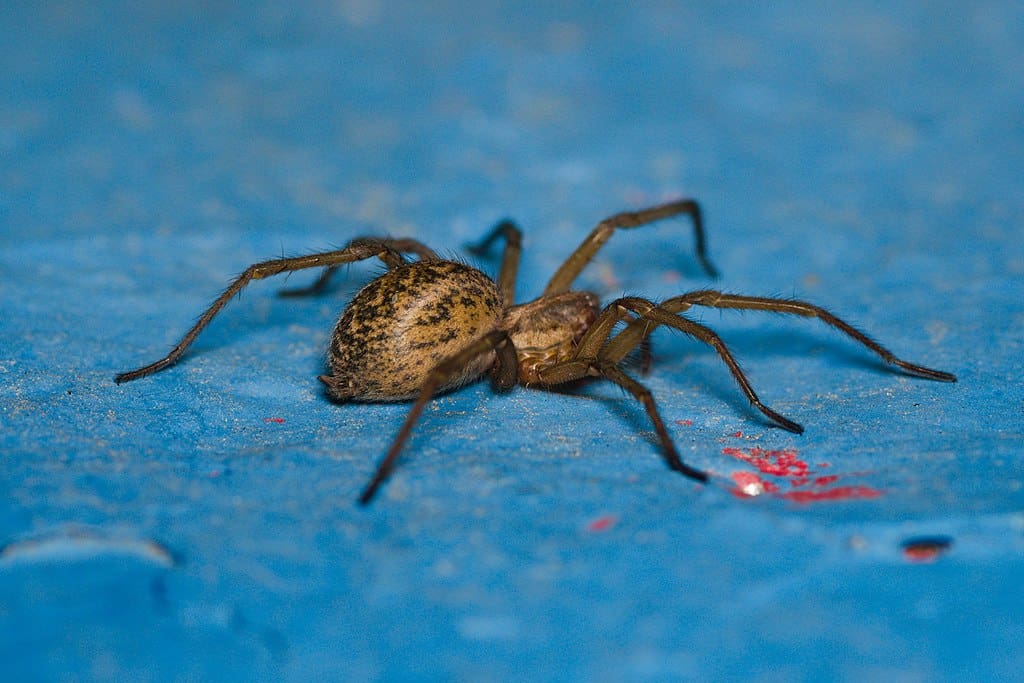Spiders are a diverse and fascinating group of arachnids that often evoke a sense of fear due to their sometimes deadly nature. While the majority of spiders are harmless and even beneficial in controlling pest populations, there are a few species in the United States that pack a venomous punch. Understanding these spiders, where they hide, and their characteristics can help reduce the risk of unpleasant encounters. This article explores the 12 most lethal spiders in the US, with details on their habitat and behaviors to ensure you’re well-equipped to identify and avoid them.
Brown Recluse Spider

The Brown Recluse Spider, known scientifically as *Loxosceles reclusa*, is one of the most infamous spiders in the US due to its venomous bite. Found primarily in the central and southern regions, this spider prefers dark, undisturbed areas like basements, closets, and sheds. It is identifiable by the violin-shaped marking on its back. Bites from a Brown Recluse can cause necrotic skin lesions and require medical attention.
Black Widow Spider

No list of lethal spiders would be complete without mentioning the Black Widow (*Latrodectus mactans*). Native to the warmer areas across the US, these spiders are recognizable by their glossy black bodies and the red hourglass marking on their abdomens. They often hide in garages, woodpiles, and outdoor furniture. While bites can cause significant pain and muscle cramps, fatalities are rare with proper medical treatment.
Hobo Spider

Originally from Europe, the Hobo Spider (*Eratigena agrestis*) has established itself in the northwestern United States. It prefers to live in gardens, under rocks, and in dark corners of basements. Although once feared for their venom, recent studies indicate they are less harmful than previously thought. Still, a bite can lead to headaches and nausea, making it crucial to exercise caution.
Yellow Sac Spider

Yellow Sac Spiders, like *Cheiracanthium inclusum*, are common in the eastern US and are identified by their pale yellow color. They build small sacs for resting, often in ceiling corners, under furniture, and in crevices. Bites from these spiders can cause localized pain and itching similar to a wasp sting, necessitating the need for local wound care and monitoring for any allergic reactions.
Wolf Spider

Wolf Spiders belong to the Lycosidae family and are found throughout the United States. Unlike web builders, these ground-dwelling hunters roam actively at night. Their robust and hairy appearance can be intimidating, yet bites are generally not dangerous beyond mild, localized reactions. They often inhabit burrows, leaf litter, and quiet corners of human dwellings.
Western Black Widow

Similar to its eastern counterpart, the Western Black Widow (*Latrodectus hesperus*) resides in the western United States. Known for its potent venom, the spider can be found in stacked wood, dry shelters, and secluded corners. While their bites require medical attention due to severe pain and potential systemic effects, fatalities remain extremely rare.
Southern Black Widow

Inhabiting the southeastern states, the Southern Black Widow (*Latrodectus mactans*) mirrors its western counterpart in appearance and habitat. These spiders prefer secluded locations at ground level, such as logs, hollow stumps, or sottish woodwork. The envenomation symptoms can mimic those of a heart attack in severe cases, necessitating immediate medical intervention.
Brown Widow Spider

The Brown Widow Spider (*Latrodectus geometricus*) is a relative newcomer to the US, now found mainly in Florida and the Gulf states. Often hiding under eaves, in shrubs, and beneath outdoor furniture, these spiders have a distinctive orange or brown hourglass marking. While their venom is less potent than other widow spiders, bites can still cause discomfort and mild systemic effects.
Red Widow Spider

Unique to the pine scrub habitats of central and southern Florida, the Red Widow (*Latrodectus bishopi*) is of particular interest to arachnologists. Recognizable by its reddish body and less distinct hourglass marking, encounters are rare due to their limited range. However, like its relatives, its bite can lead to neurotoxic symptoms that require medical attention.
Desert Recluse Spider

The Desert Recluse (*Loxosceles deserta*) is native to the arid regions of the southwestern US. Similar in appearance to the Brown Recluse, it seeks out warm, dry shelters such as under rocks and debris. Bites can result in serious skin necrosis, emphasizing the importance of recognizing and respecting this spider’s habitat.
Mouse Spider

Mouse Spiders, particularly *Scotophaeus blackwalli*, reside across the southwestern United States. These ground-dwelling spiders are often mistaken for tarantulas due to their size and hairy bodies. Though venomous, bites are rarely serious, resulting in mild symptoms. They prefer burrowing in soil and under stones.
Black House Spider

Found predominantly on the west coast, the Black House Spider (*Badumna insignis*) sports a charcoal-gray color. It constructs messy webs in the crevices of home exteriors and garden walls. While bites can lead to localized pain and swelling, they are not considered medically significant.
Conclusion:

In conclusion, while these 12 spiders are among the most venomous in the United States, it’s crucial to remember that their role in the ecosystem is vital. They help control insect populations and typically avoid human contact. With the knowledge of where they reside and their physical characteristics, we can coexist safely with these fascinating creatures. Awareness, caution, and respect are key to minimizing risks of encounters and ensuring personal safety.
- 13 Most Aggressive Mammals in the Wild - August 24, 2025
- 10 Behaviors That Keep Eagles Healthy And 3 That Shorten Lifespan - August 24, 2025
- 13 Wildest Animal Migration Journeys - August 24, 2025

